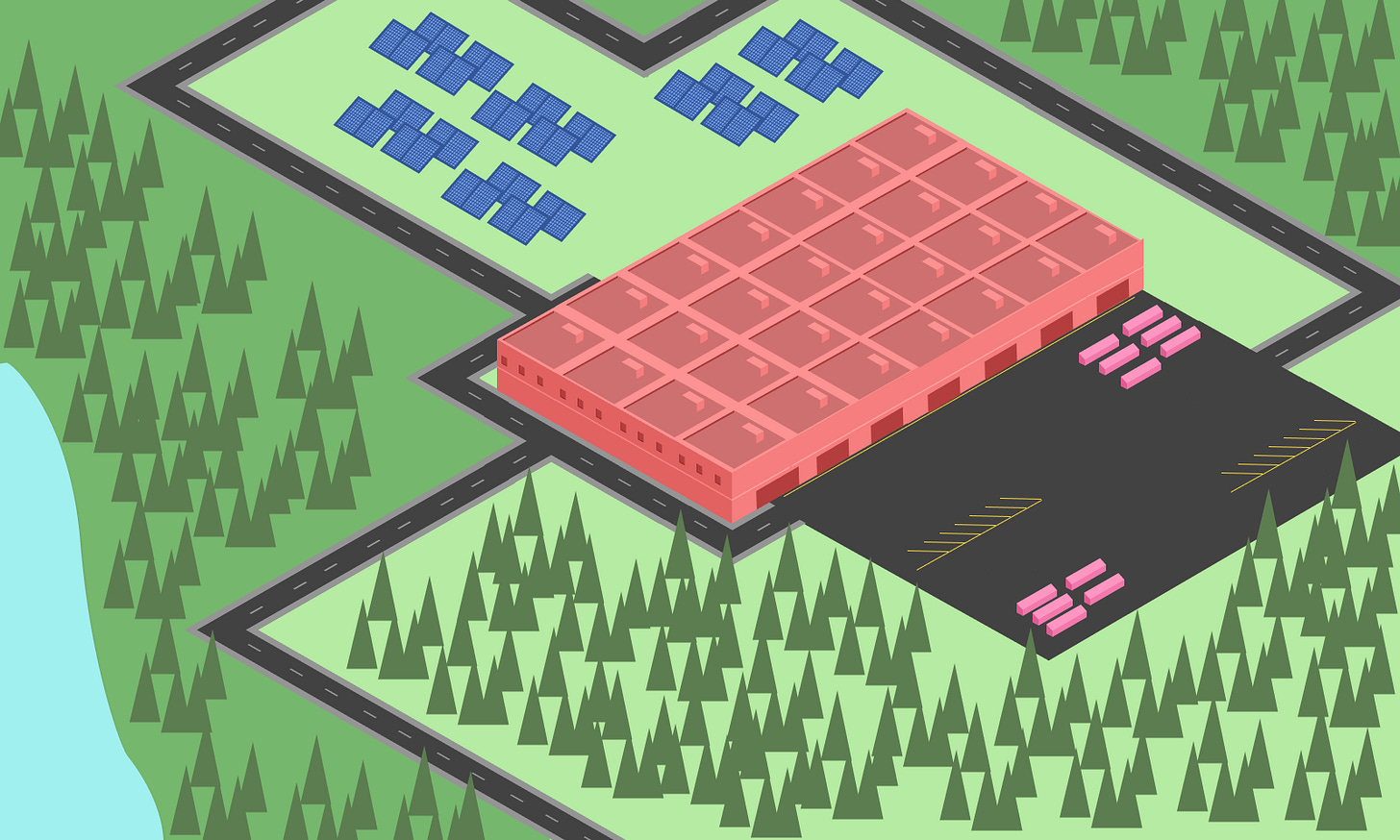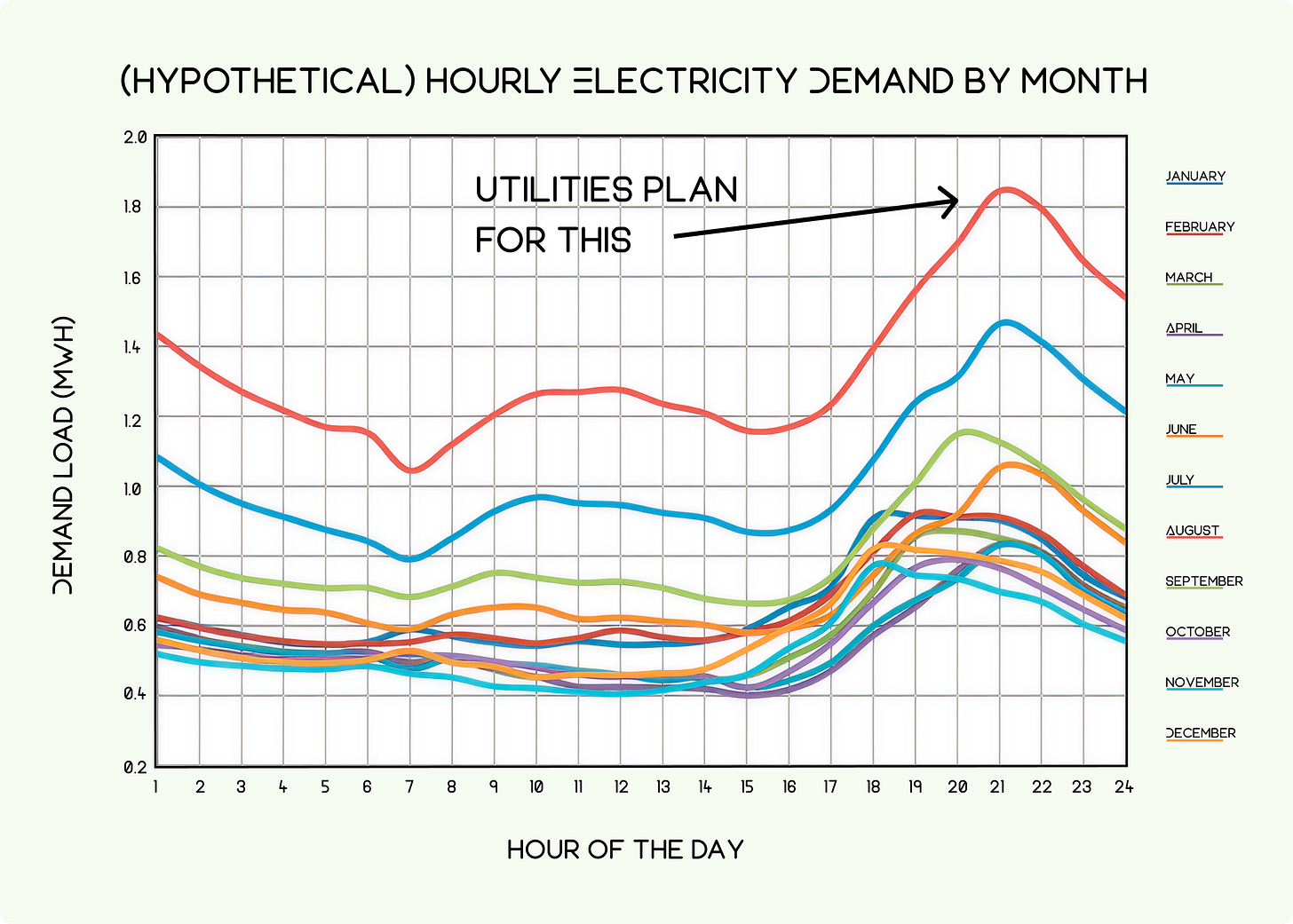Why Nuclear is Not Enough
What actually stands between us and energy abundant urbanism
Welcome back! This is part 2 of my conversation with Sean Fleming on the future of municipal power systems. Sean is an advisor and investor working in the energy industry with deep expertise on the inner workings of investor-owned utilities, how modern power grids are built and maintained, and what’s next in the world of energy startups. He also writes about energy tech at Clean Energy Review.
Part 1: How to Power a City
Part 2: Why Nuclear is Not Enough
Part 3: Building Solar Punk Utopia
Continued from Part 1: How to Power a CityAn Iron Triangle: Quantity, Reliability, and Cost
Jeff Fong: What do you think the biggest constraints are? What are the big challenges everybody talks about?
Sean Fleming: There’s three things that utilities have historically focused on: (a) delivering enough power, (b) reliably / consistently, and (c) at a low cost, basically in that order.
Between 2020 and 2000, load growth was pretty minimal in the United States. The system wasn't requiring more energy overall, and so the focus was primarily on (b) reliability and (c) low cost — the second two parts of that stool. That meant that utilities focused on things like outage response and storm response… like, if something happens to disrupt service, if something happens out of the system, how do we recognize there’s a problem and fix it as quickly as possible. Public utilities would orient around metrics tracking the duration and frequency of outages, and this is what public utilities commissions (that regulate big utilities) would be focused on.
The rise of electric vehicles, electrification of homes and businesses more generally, along with data centers, and other kinds of big loads that we've seen try to come online in the last couple of years has changed this. Load growth is back as an issue in the United States. So now everyone is having to figure out how to balance load growth, reliability, and cost all at the same time.

What makes that hard is, one — these are physical assets out in the world; two — they're linear assets that cross a bunch of different borders and jurisdictions. Those borders may make sense on a political map, but do not make sense in terms of the way the city is physically built or the way the grid was constructed.
With these physical assets, all the same issues that you'd expect from a general urbanism perspective apply. Permitting takes a long time. You might need to cut power or dig up a street, which people hate. If you need skilled labor to go make these construction changes, that takes time. All the things that make building an apartment building or a subway hard, expensive, and slow apply equally to the electric grid.
The second thing is these systems are complex to plan and to operate. There's important safety buffers that need to be built into them, both in the physical equipment and also in the operations processes, and the potential for tricky emergent edge cases that need to be planned for.
It’s less like evaluating an apartment building for structural integrity, and more like trying to understand the sewer system requirements for a whole neighborhood when you’re upzoning but not sure exactly what’s going to be built where and when. You have to evaluate how the infrastructure handles new load requirements under a range of future scenarios requiring skilled engineers and a lot of computational complexity.
Regulating Public Utilities…It Kinda Sounds like Central Planning
Sean Fleming: The last big part of the challenge is the regulatory oversight of utilities. Regulation is inherently political and top down.
States generally have what's known as a public utilities commission (PUC) that manages the regulated power monopolies within their jurisdiction. In California, it's the California Public Utilities Commission, CPUC. The primary mechanism to manage the operations of an investor-owned utility (like Southern California Edison or Pacific Gas and Electric) is through their rate case, which is a multi-year investment request. A utility will say “we want to spend X billions of dollars across all these different categories and, as part of that, we want to charge consumers Y prices.”
Those plans will get reviewed over the course of years in an explicitly adversarial process with the utility, with rate payer advocates, and administrative law judges. These don't happen very often and you're having to forecast an uncertain future. And because public utilities commissions (and/or ratepayer advocates) often worry that utilities are padding their budget and asking for the ability to charge consumers higher rates than is really necessary.
It's fine when the system is largely unchanging like it has been for most of the last 25 years, but suddenly, when things are changing and new needs are popping up, this four year cycle with a very adversarial process is not necessarily well suited to getting ahead of growing needs.
So the big challenge is that we suddenly need and want to move more quickly, but the regulatory and organizational system we have around the electric grid is not designed to move quickly, and generally can’t.
Transmission is the Real Bottlneck
Jeff Fong: So the assumption on the regulator’s part is that the utilities companies are always going to cry wolf about how much they need to spend on capital improvements (so they can justify charging consumers more). But with EVs, data centers, and everything else, the wolf is actually real this time.
Sean Fleming: Right, and in the story the kid didn’t get eaten I think?
Historically you wouldn't factor specific new load into your forecast until a developer committed to connecting something new to the grid and put down a deposit for a new factory or whatever. And that might be 18, maybe 12, months ahead of time. It was kind of a check the box thing because there used to always be enough capacity in the system that people didn't really need to plan ahead.
But now energy demand is growing much faster. Any individual electrified Amazon warehouse or even Tesla supercharger could tip a given substation over its capacity, and dealing with that requires escalating levels of investment and time (often years) to actually deploy upgrades.
If all you need is a new circuit, like one of these distribution lines that comes out of the substation and goes to serve your new warehouse, that might be anywhere from $1 million to $10 million. If you need a new substation, that's like a $50 million thing, and five to seven years depending on where it is.
I'm probably most familiar with California where there's logistics areas where Amazon, FedEx, UPS, Walmart, etc are all building out these warehouses. They want big new interconnections because they want to be able to charge their electric truck fleets that the state is making them purchase, right? And then they're getting into this problem because they all want to do it in the same place next to an airport or the port, and suddenly there's just actually not enough power capacity in that part of the grid to go serve it. And it's going to be five to seven years to get to make it better, so everyone ends up frustrated.
Jeff Fong: What you're bringing up is reminding me of everyone trying to build data centers for AI suddenly becoming super pro-nuclear. But you’re talking about a bottleneck in-between generation and consumption. All of that intermediary infrastructure would be a multi-year, if not multi-decade, effort — even if we had nuclear power plants generating energy today.
Sean Fleming: Yeah. Depending on what you're trying to do and how big of an upgrade is required, it can take anywhere from five to ten years, longer if net new transmission is required. And that’s not a timeline completely based on utilities being slow. It just takes a long time to build major infrastructure in cities.
The permits, the council meetings, and the load flow analysis, and actually getting the equipment…it all just takes time.
This is one of the reasons some datacenter developers are looking to have generation ‘behind-the-meter’ at their facility, so they don’t have to worry as immediately about power system upgrades.
Jeff Fong: Yeah, and I suspect there’ll be people reading this screaming NEPA at their screens but your earlier point that power infrastructure is just more delicate is well taken. It’s not like housing that’s effectively inert.
Sean Fleming: This does vary a bit depending on where in the country you are. Some systems just have more latent capacity than others. The grid is built for, more or less, the worst hour of the year — and often the worst hour of every 10 years.
In places like the southwest in the US, that's generally the hottest afternoon hour in August or September, when everyone's running their AC. So you have to forecast what the system needs to withstand during that hour. That's mostly the way the system is still designed and managed, but it’s not necessarily the only way to think about it.

People are getting more creative with the interconnection agreements. They’re asking if there’s some way we can give up a very small percentage of the hours of the year to get connected to the grid way faster.
You might say, “Hey, we're happy to take our Amazon warehouse and not charge all of our vehicles during that worst hour, if that helps us get interconnected faster or more cheaply.”
There is increasing innovation on both the generation and load sides of this. In Texas, the Energy Reliability Council Texas (ERCOT) manages the grid in most of the state. They have what's known as a connect and manage regime for new generation where the initial interconnection process is much faster — with the understanding that during times of grid stress you may have to curtail generation (until planned infrastructure improvements are eventually put in place).
On the load side of things, datacenter developers are trying to get this in place, with Google recently announcing a flexible demand response program with the Tennessee Valley Authority and startups like Emerald AI building the technical backend to flex computational workloads during grid stress.
To Be ContinuedThat’s it for today.
In part 3, we’ll finish up with how new technologies will enable energy abundance and how we might be able to build the future faster (another spoiler: it turns out the Texas approach might not be so dumb after all).





You say that nuclear isn't the solution because the bottleneck is in transmission. But if (big if) small modular reactors can be sited where the need is, stood up quickly, and moved if the demand changes, then transmission doesn't matter as much.